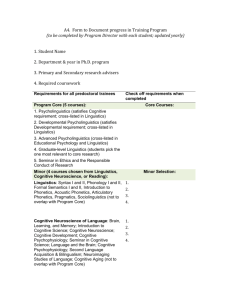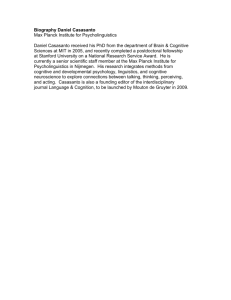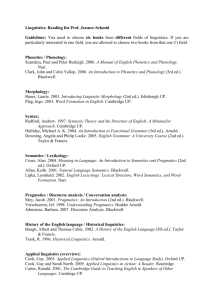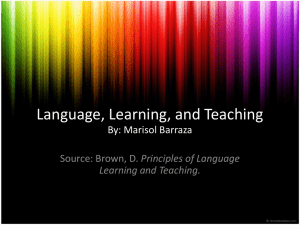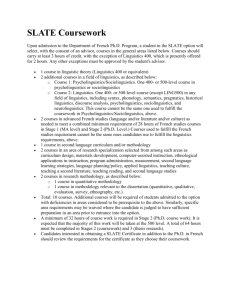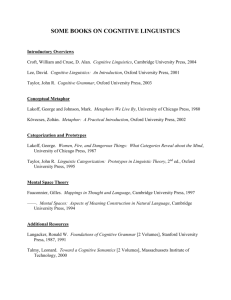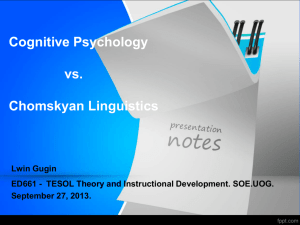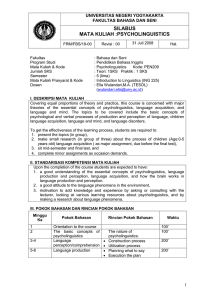Overview: History, Topics and Methods of Psycholinguistics
advertisement
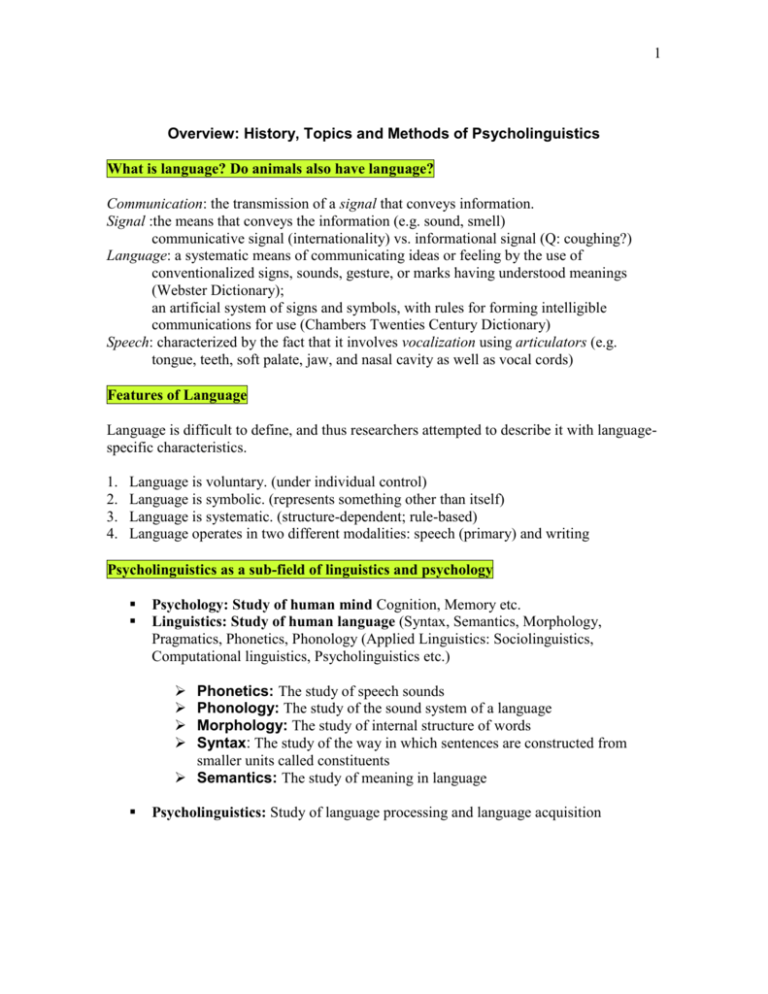
1 Overview: History, Topics and Methods of Psycholinguistics What is language? Do animals also have language? Communication: the transmission of a signal that conveys information. Signal :the means that conveys the information (e.g. sound, smell) communicative signal (internationality) vs. informational signal (Q: coughing?) Language: a systematic means of communicating ideas or feeling by the use of conventionalized signs, sounds, gesture, or marks having understood meanings (Webster Dictionary); an artificial system of signs and symbols, with rules for forming intelligible communications for use (Chambers Twenties Century Dictionary) Speech: characterized by the fact that it involves vocalization using articulators (e.g. tongue, teeth, soft palate, jaw, and nasal cavity as well as vocal cords) Features of Language Language is difficult to define, and thus researchers attempted to describe it with languagespecific characteristics. 1. 2. 3. 4. Language is voluntary. (under individual control) Language is symbolic. (represents something other than itself) Language is systematic. (structure-dependent; rule-based) Language operates in two different modalities: speech (primary) and writing Psycholinguistics as a sub-field of linguistics and psychology Psychology: Study of human mind Cognition, Memory etc. Linguistics: Study of human language (Syntax, Semantics, Morphology, Pragmatics, Phonetics, Phonology (Applied Linguistics: Sociolinguistics, Computational linguistics, Psycholinguistics etc.) Phonetics: The study of speech sounds Phonology: The study of the sound system of a language Morphology: The study of internal structure of words Syntax: The study of the way in which sentences are constructed from smaller units called constituents Semantics: The study of meaning in language Psycholinguistics: Study of language processing and language acquisition 2 Competence vs. Performance Competence: the implicit knowledge of language rules which enables us to generate (and understand) an infinite number of grammatically correct sentences, even when we have never heard them or said them before. Performance: our actual language ability, limited by our cognitive capacity like memory, fatigue, etc. (e.g. multiply center embedded sentence: the mouse the cat the dog chased bit died.) Major Topics in Psycholinguistics (but not limited to): 1. First language acquisition 2. Language processing a. Speech b. Lexical c. Sentence d. Discourse 3. Brain damage and language processing Major Issues in Psycholinguistics Innateness of language: nature vs. nurture question Modularity of language: autonomous vs. interdependent process Language processing mechanism Research methods and techniques History of Psycholinguistics 1. Structuralism (late 19th century) & Functionalism (Early 20th century) Structuralists attempted to describe the structure of the human mind and of sensations, images, and feelings by the means of language. Functionalists were interested in what people do with language and thoughts, rather than the structure of the mind. 2. Behaviorism (early to mid twentieth century) Early 1900s, behaviorists tried to establish psychology as an empirical science with scientific methods but devoid of mental constructs like mind, thought, and imagery. B.F. Skinner in Verbal Behavior (1957) argued that speech was a product of operant learning processes such as reinforcement, extinction and generalization. 3 3. Linguistics (post behaviorism through Chomsky) - nature vs. nurture debate Noam Chomsky critically reviewed Skinner’s book in 1959; gave rationalist argument that the potential for language was an innate mental capacity. Chomsky argued that children’s patterns of language acquisition were too systematic to be the product of parents’ operant conditioning. Human species has a built-in language acquisition device (LAD). 4. Cognitive psychology (late 1960 – early 1980s); and Transition from behaviorism to the cognitive perspective: cognitive revolution; the study of how people perceive, organize, remember, and use information (here, information = language). 5. Cognitive science (since mid 1980s) Cognitive science is a interdisciplinary effort that integrates research in linguistics, (cognitive) psychology, artificial intelligence, cognitive neuroscience, and philosophy in order to understand more clearly how humans think and communicate.
